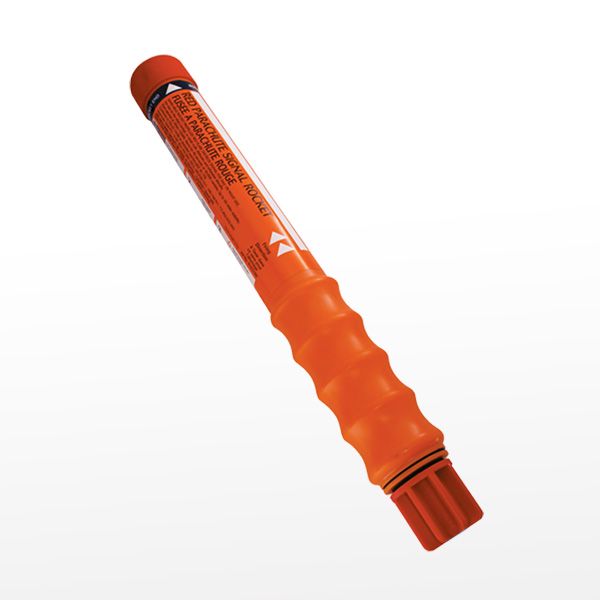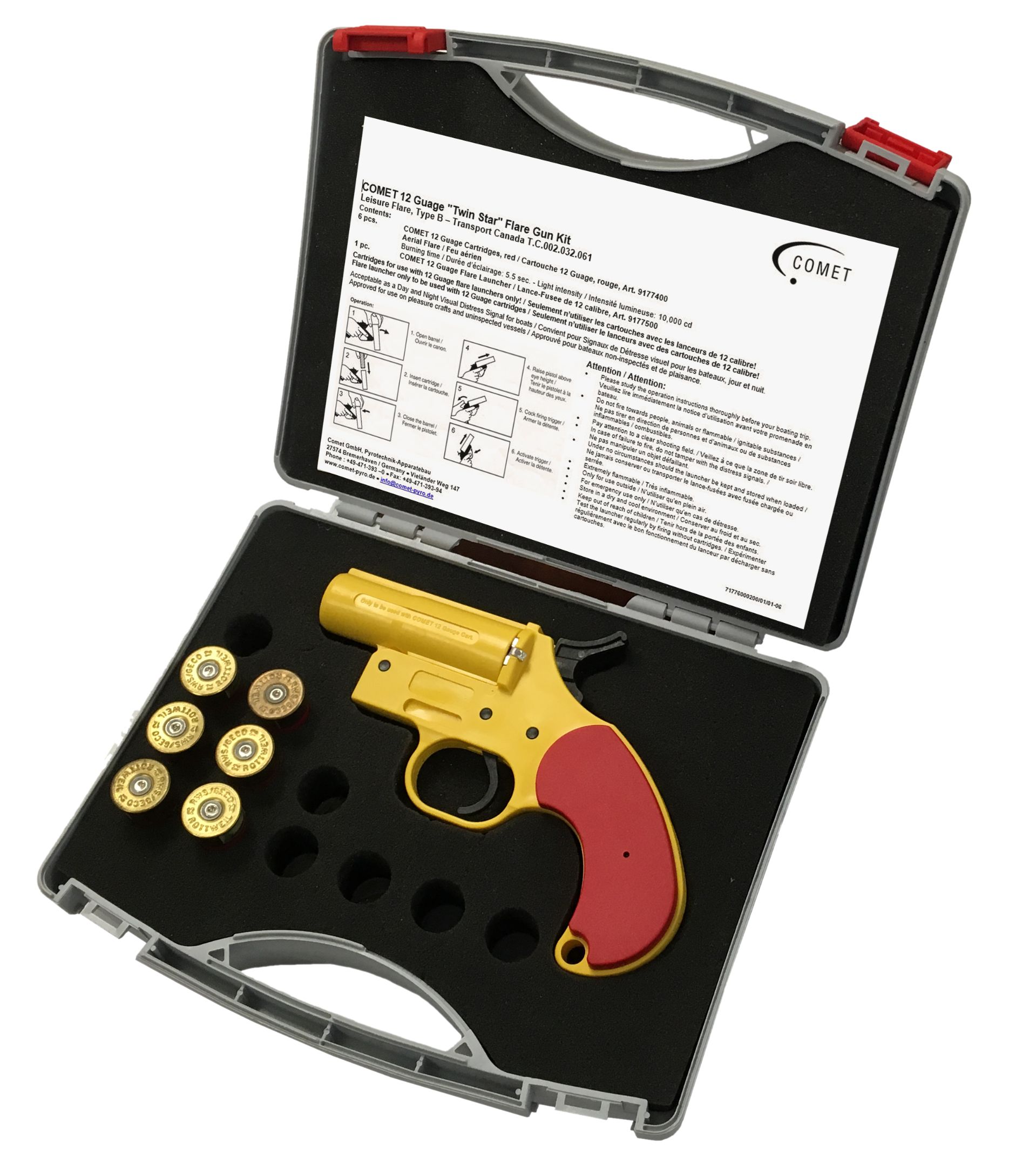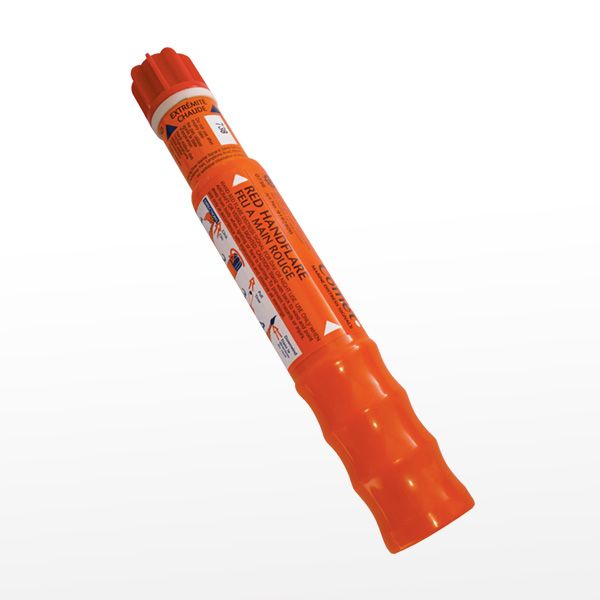Lighting the Way to Safety with Pyrotechnic Distress Signals
For recreational boaters navigating unpredictable waters, it is important to be prepared for any emergency. While there are various tools available to keep mariners safe, pyrotechnic distress signals stand out as a crucial lifeline in these frightening moments.
Often referred to as flares, their purpose is clear: to attract attention and signal distress to nearby vessels or rescue services. In fact, it is a legal requirement for boats to carry a certain number of Transport Canada approved distress flares, that are not expired, at all times when over 1 nautical mile from shore.
Types of Pyrotechnic Distress Signals
Type A, Rocket Parachute Flares: This flare is equipped with a rocket that propels it up to 300 meters into the air and once it reaches its highest point, a parachute is deployed, causing it to descend slowly while emitting a vibrant red light for a minimum of 40 seconds. This light can be seen up to 20 nautical miles away.

Type B, Multi-Star Flares: This flare emits two or more intense red stars at intervals of up to 15 seconds and each star remains illuminated for a minimum of 4 seconds. With a maximum height of 100 meters, it can be visible up to 21 nautical miles.

Type C, Hand Flares: This is a handheld red flare designed to burn steadily for a duration of at least one minute. They are more visible from the air than from land and serve as effective signals for rescuers who are within a few nautical miles of the distressed vessel.

Type D, Smoke Signal: Smoke signals come in two types: handheld or buoyant. The buoyant type, available at DSS Protection, releases dense orange smoke for a minimum of 3 minutes when deployed in calm water. The handheld produces the same type of smoke, but for at least one minute. It’s important to note that smoke signals are only effective during daylight hours.

How many flares do you need? Well, that depends on the size of your boat.
-
6 m or less: 3 flares, other than smoke signals
-
Between 6 m and 9 m: 6 flares, other thansmoke signals
-
Between 9 m and 12 m: 12 flares, at least half of which are not smoke signals
-
Over 12 m: 12 flares, at least half of which are not smoke signals
How to store flares properly
Store flares in a cool, dry place in a watertight container, away from moisture and extreme tempertaure to help prolong their lifespan.
Do you need to dispose your expired flares?
Pyrotechnic flares have a lifespan of four years from the date of manufacture. It's crucial to dispose of them after this period because their chemical composition degrades over time, reducing their effectiveness. Never attempt to ignite expired flares or dispose of them in a regular household trash. Improper disposal methods can pose a serious safety risk.
Did you know that DSS Protection offers a free flare disposal program? We will dispose of any Type A, B, C, or D pyrotechnic flare for free with the purchase of equal quantity Comet or Pains Wessex brand marine pyrotechnic.
Be safe and prepared on the water this summer! Get your Pyrotechnic Distress Signals Today!
© 2025 DSS Protection. All Rights Reserved. | Web Design: immediac.com